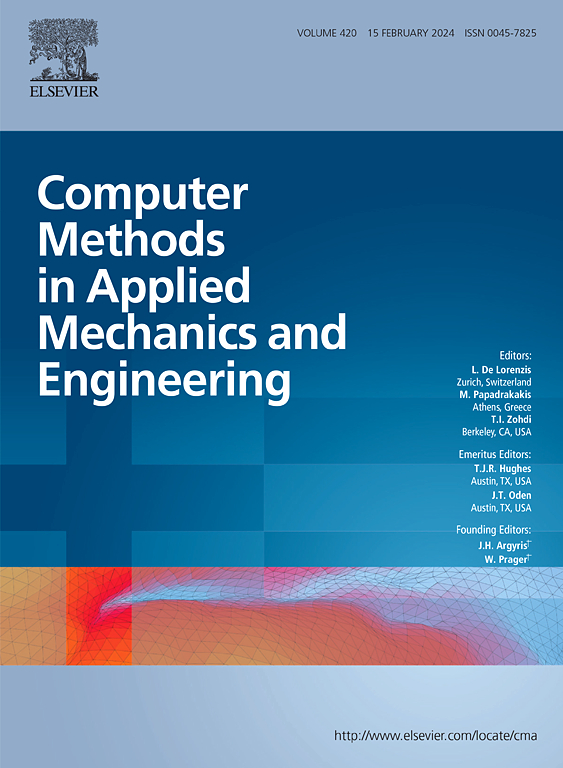A NURBS-based level set method for the manufacturing-oriented thermal buckling optimization of curvilinear fiber composite panels with cut-outs
IF 6.9
1区 工程技术
Q1 ENGINEERING, MULTIDISCIPLINARY
Computer Methods in Applied Mechanics and Engineering
Pub Date : 2025-01-30
DOI:10.1016/j.cma.2025.117789
引用次数: 0
Abstract
Laminate composite panels with arbitrary cut-outs in a thermal environment may suffer buckling failure because of thermal stress. To address this issue, a manufacturing-oriented thermal-buckling optimization model is proposed for the design of curvilinear fiber paths. Furthermore, instead of using the traditional finite element method (FEM) with high computational costs, a cut non-uniform rational basis spline (NURBS) element method was developed for the thermal buckling analysis of laminate composite panels with arbitrary cut-outs. In this method, a level-set function, segmented density interpolation formulas, and an artificial shear correction factor were developed to describe arbitrary cut-outs, to overcome localized eigenmodes, and to avoid shear locking. Furthermore, a NURBS-based level-set method was proposed to illustrate the curvilinear fiber paths. The norm of the gradient vector of the NURBS-based level-set function was used to express the gap/overlap constraint. Subsequently, a thermal buckling optimization framework with compliance and manufacturing constraints was formulated. The effectiveness of the proposed optimization framework was verified numerically.
求助全文
约1分钟内获得全文
求助全文
来源期刊
CiteScore
12.70
自引率
15.30%
发文量
719
审稿时长
44 days
期刊介绍:
Computer Methods in Applied Mechanics and Engineering stands as a cornerstone in the realm of computational science and engineering. With a history spanning over five decades, the journal has been a key platform for disseminating papers on advanced mathematical modeling and numerical solutions. Interdisciplinary in nature, these contributions encompass mechanics, mathematics, computer science, and various scientific disciplines. The journal welcomes a broad range of computational methods addressing the simulation, analysis, and design of complex physical problems, making it a vital resource for researchers in the field.

 求助内容:
求助内容: 应助结果提醒方式:
应助结果提醒方式:


